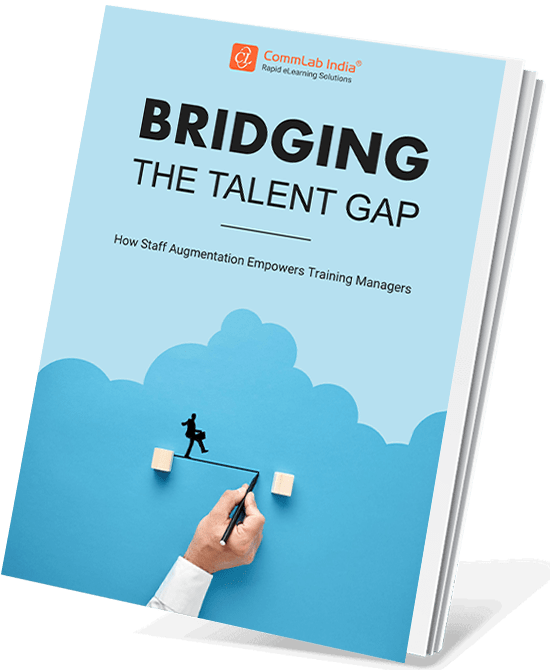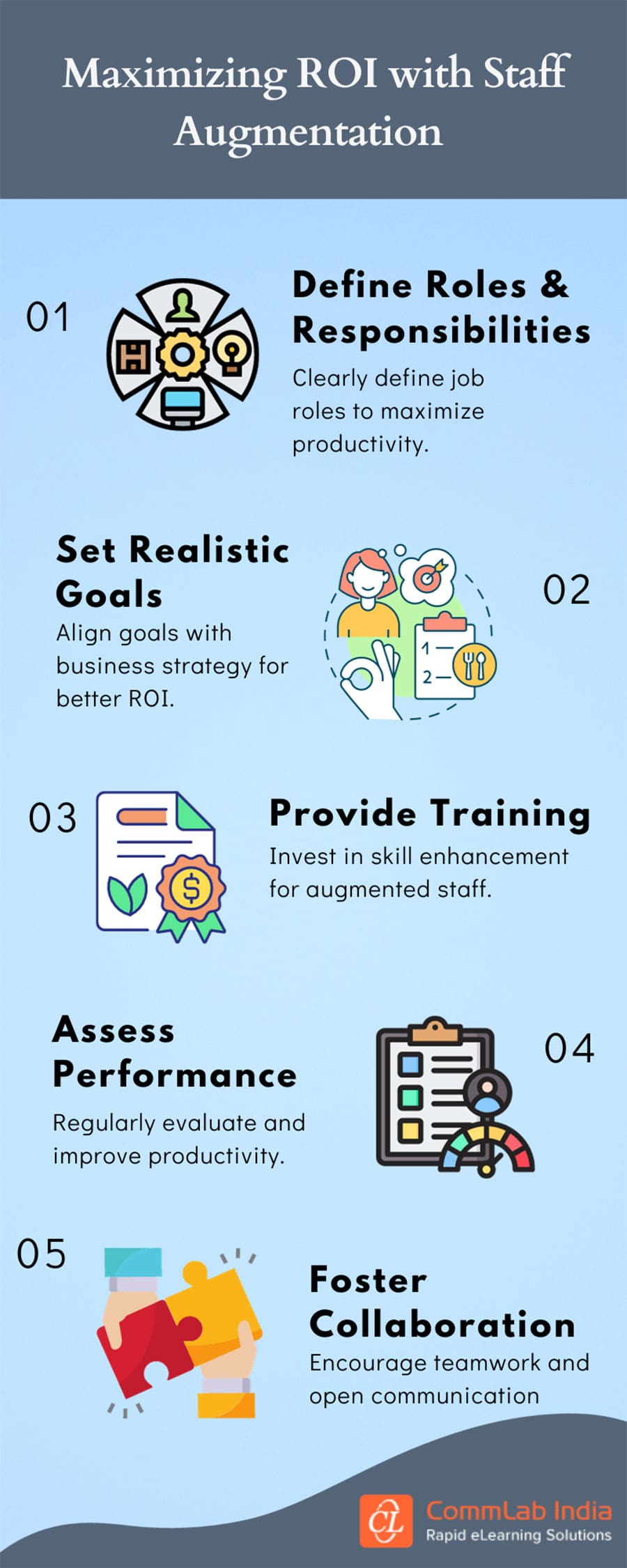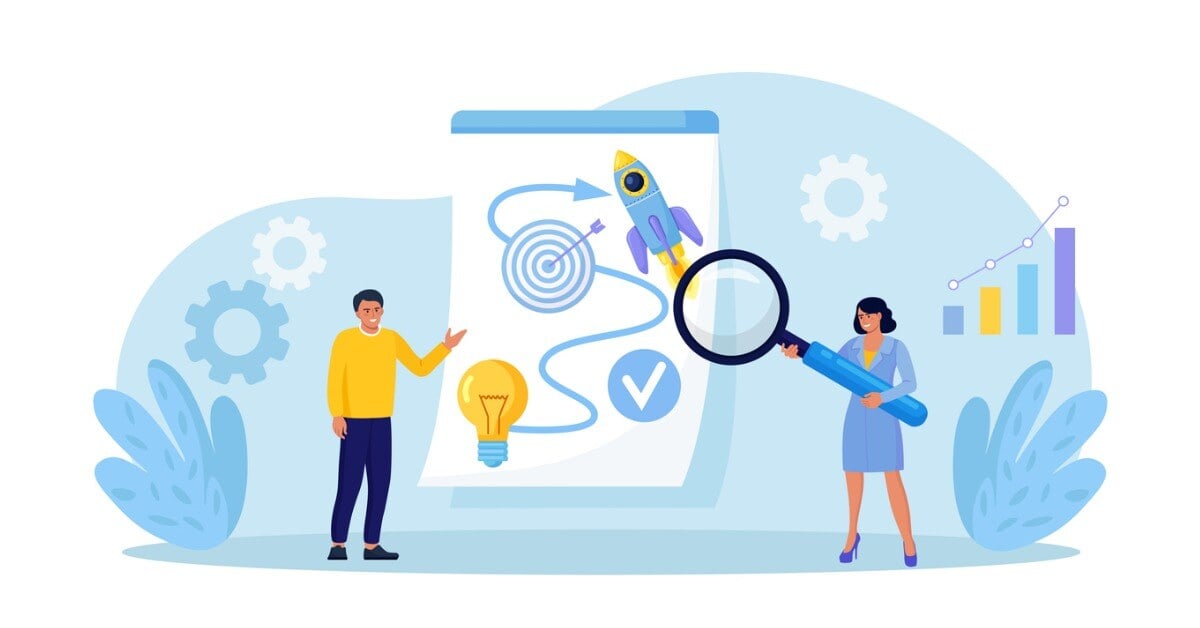How Can L&D Staff Augmentation Help Improve Training ROI?

In today's fiercely competitive business environment, organizations are increasingly recognizing the critical importance of training and development in building a skilled and adaptable workforce. However, achieving a positive return on investment (ROI) from training initiatives can be a daunting challenge for L&D departments. The emergence of L&D staff augmentation offers a promising solution to these challenges. In this comprehensive blog post, we will discuss the concept of L&D staff augmentation and explore its potential to revolutionize your training ROI.
→ Download eBook Now - Staff Augmentation for L&D Teams
Table of Contents
- What are the Challenges in L&D that can Hinder a Positive ROI?
- What is The Power of L&D Staff Augmentation?
- How Does L&D Staff Augmentation Improve Training ROI?
- What are the Key Use Cases for L&D Staff Augmentation?
- How to Choose the Right L&D Staff Augmentation Partner?
- What are the Best Practices for Successful Partnerships?
- How to Measure the Impact of L&D Staff Augmentation on ROI?
- Exploring a Few Real-World Examples!
The pressure to deliver impactful training programs within limited budgets and resources is ever-present, while the rapidly evolving nature of work demands constant upskilling and reskilling of employees. By strategically supplementing your existing L&D team with external expertise, you can access specialized skills, optimize resources, and accelerate training development and delivery. This staff augmentation approach can significantly enhance the quality and effectiveness of your training programs, leading to improved learner outcomes and ultimately, a greater return on your training investment.
Want to Improve Training ROI? Leverage L&D Staff Augmentation!
Here are a few ways it can improve it
- Enhances training quality and effectiveness
- Improves learner engagement and retention
- Reduces training costs and time-to-competency
What are the Challenges in L&D that can Hinder a Positive ROI?
In today's rapidly evolving business landscape, Learning & Development (L&D) departments face a myriad of challenges that can hinder their ability to deliver effective training and achieve a positive return on investment (ROI). These challenges stem from various factors, including the widening skills gap, limited budgets and resources, and the need for scalability and flexibility. Let's dive deeper into each of these challenges to understand their implications for L&D professionals.
1. The Skills Gap and its Impact
The skills gap, or the mismatch between the skills employees possess and the skills required for their jobs, is a growing concern for organizations worldwide. This gap is primarily fueled by technological advancements, which are constantly reshaping industries and creating a demand for new skills. As a result, L&D departments are under immense pressure to upskill and reskill their workforce to keep pace with these changes. Failure to address the skills gap can have serious consequences, including decreased productivity, reduced employee engagement, and ultimately, a loss of competitive advantage.

2. Limited L&D Budgets and Resources
Another major challenge facing L&D departments is the perennial struggle with limited budgets and resources. L&D professionals are often expected to do more with less, which can lead to compromises in training quality and effectiveness. Additionally, the difficulty of hiring and retaining top L&D talent further exacerbates this challenge. The scarcity of skilled L&D professionals makes it difficult for organizations to build and maintain a high-performing L&D team.
3. The Need for Scalability and Flexibility
In today's dynamic business environment, L&D departments need to be agile and adaptable to meet the ever-changing training needs of their organizations. This includes the ability to scale training delivery up or down as needed and to accommodate a globalized workforce with diverse learning styles and preferences. Traditional training models often struggle to meet these demands, leading to inefficiencies and missed opportunities.
In short, L&D departments face a complex set of challenges that can impact their ability to deliver effective training and achieve a positive ROI. By understanding these challenges, L&D professionals can device strategies to overcome them and foster a learning environment that encourages employee growth and ensures organizational success.
What is The Power of L&D Staff Augmentation?
In the face of these mounting challenges, L&D staff augmentation emerges as a strategic solution that empowers organizations to overcome limitations and unlock new levels of training effectiveness. L&D staff augmentation involves partnering with external providers to supplement your existing L&D team with specific skills and expertise. This approach offers several key advantages that can significantly enhance your L&D capabilities and drive better training outcomes.

1. Access to Expertise
One of the primary benefits of L&D staff augmentation is gaining access to a global pool of L&D professionals with differentiating skills. This allows you to fill critical skills gaps within your L&D team without any lengthy recruitment and onboarding processes. Whether you require expertise in instructional design, eLearning development, or leadership training, staff augmentation provides a flexible and efficient way to tap into the specific talent you need, when you need it.
2. Cost-Effectiveness and Efficiency
Compared to full-time hiring, staff augmentation offers significant cost savings. You avoid the extra expenses associated with salaries, benefits, and office space, while still gaining access to top-tier talent. Additionally, staff augmentation scales your L&D resources as needed so that you meet your training demands without overspending.
3. Increased Agility and Responsiveness
In today's fast-paced business environment, the ability to respond quickly to changing training needs is crucial. L&D staff augmentation enables faster training development and deployment, ensuring that your employees have the skills they need to succeed in a timely manner. Furthermore, staff augmentation provides the flexibility to adapt to evolving business needs, allowing you to pivot your training strategy as required.
L&D staff augmentation helps organizations address the challenges they face in delivering effective training. By providing access to expertise, cost savings, and increased agility, staff augmentation enables L&D departments to optimize their resources and meet their training goals. Here’s a short video that explains why staff augmentation is necessary.
How Does L&D Staff Augmentation Improve Training ROI?
Having established the power of L&D staff augmentation in addressing common L&D challenges, let's now explore how this strategic approach can directly contribute to improving training ROI. By enhancing training quality, boosting learner engagement, and reducing costs, L&D staff augmentation can deliver tangible benefits that positively impact your organization's bottom line.
1. Enhances Training Quality and Effectiveness
The expertise and experience brought in through L&D staff augmentation can significantly elevate the quality and effectiveness of your training programs. Augmented staff can leverage their specialized knowledge to design and deliver high-impact training that aligns with your organization's specific needs and objectives. Furthermore, they can introduce cutting-edge instructional design methodologies and technologies to create engaging and impactful learning experiences. By ensuring that your training programs are both relevant and effective, you can maximize learner outcomes and drive better business results.
2. Improves Learner Engagement and Retention
Learner engagement is a critical factor in the success of any training program. L&D staff augmentation can help you create personalized and immersive learning experiences that resonate with your employees and foster deeper understanding. By incorporating interactive elements, gamification, and real-world scenarios, augmented staff can make learning more enjoyable and impactful. Additionally, they can implement effective assessment and feedback mechanisms to track learner progress and provide timely support, further enhancing knowledge retention and application.

Bridging the Talent Gap: How Staff Augmentation Empowers Training Managers
Craft a Dream Team of Exceptional Experts, Meticulously Suited to your Requirements!
- Advantages and Considerations of Staff Augmentation
- L&D Roles that Benefit from Staff Augmentation
- Staff Augmentation Process
- Success Stories
3. Reduces Training Costs and Time-to-Competency
L&D staff augmentation can also help you optimize training processes and streamline delivery, leading to significant cost savings. By leveraging their expertise, augmented staff can identify areas for improvement and implement efficiencies that reduce training time and resources. This can result in faster time-to-competency for your employees, enabling them to contribute to your organization's success more quickly. Additionally, staff augmentation helps you cut down costs associated with developing and maintaining in-house L&D expertise, freeing up the budget for other strategic initiatives.
In summary, L&D staff augmentation offers a multi-faceted approach to improving training ROI. By enhancing training quality, boosting learner engagement, and reducing costs, this strategic approach can deliver measurable benefits that contribute to your organization's overall success. Here’s an infographic to help you understand more about how staff augmentation can maximize ROI.
What are the Key Use Cases for L&D Staff Augmentation?
The versatility of L&D staff augmentation makes it applicable to a wide range of training and development needs within an organization. Let's explore some key use cases where leveraging external expertise can bring about significant improvements in training delivery and ROI.
1. Developing and Delivering Specialized Training Programs
When your organization requires training in niche areas or emerging technologies, finding in-house expertise can be challenging and time-consuming. L&D staff augmentation provides a quick and effective solution by connecting you with professionals who possess the specific skills and knowledge needed. This is particularly valuable for technical skills training, leadership development programs, or compliance training where specialized knowledge is paramount.

2. Implementing New Learning Technologies
The L&D landscape is constantly evolving with the introduction of new learning technologies and platforms. Implementing and integrating these tools effectively requires a certain level of technical proficiency and understanding of best practices. L&D staff augmentation allows you to tap into experts who specialize in specific learning technologies, such as Learning Management Systems (LMS), eLearning platforms, or even Virtual and Augmented Reality (VR/AR) solutions. Their guidance ensures a smooth transition and maximizes the potential of these tools to enhance the learning experience.
3. Scaling Training Delivery for Large or Global Organizations
For organizations with a large workforce or a global presence, scaling training delivery can be a logistical challenge. L&D staff augmentation can provide the additional manpower and expertise needed to manage multiple training programs simultaneously and deliver consistent training across different time zones and cultures. This ensures that all employees, regardless of location, receive the training they need to perform their jobs effectively.
These are just a few examples of how L&D staff augmentation can be leveraged to address specific training and development needs. The flexibility and scalability of this approach make it adaptable to a wide range of situations, allowing organizations to optimize their training efforts and achieve better ROI.
How to Choose the Right L&D Staff Augmentation Partner?
Selecting the right L&D staff augmentation partner is crucial to the success of your training initiatives and the realization of improved ROI. With numerous providers available, it is essential to carefully evaluate potential partners based on several key factors.
1. Expertise and Experience
First and foremost, assess the expertise and experience of the L&D staff augmentation provider. Do they have a proven track record in delivering successful training solutions? Do their professionals possess the specific skills and knowledge required for your projects? It is important to choose a partner whose capabilities align with your organization's needs and objectives.

2. Cultural Fit and Communication
A strong cultural fit and effective communication are vital for a successful partnership. Ensure that the provider's values and work style are compatible with your organization's culture. Open and transparent communication channels should be established to facilitate collaboration and ensure everyone is aligned on project goals and expectations.
3. Scalability and Flexibility
Your training needs may fluctuate over time, so it is crucial to choose a partner who can scale their services up or down as required. They should also be flexible enough to adapt to changes in project requirements or timelines. This ensures that you always have the right level of support without being tied to long-term commitments.
4. Technology and Tools
Inquire about the technology and tools that the provider utilizes. Are they up-to-date with the latest learning technologies and platforms? Do they have the infrastructure to support your training delivery needs, whether it's online learning, virtual classrooms, or mobile learning? A technologically savvy partner can enhance the learning experience and ensure your training programs remain cutting-edge.
What are the Best Practices for Successful Partnerships?
Once you have selected an L&D staff augmentation partner, following some best practices can foster a productive and mutually beneficial relationship:
- Clear Communication and Expectations: Establish clear communication channels and set expectations from the outset. Define project goals, timelines, deliverables, and communication protocols to avoid misunderstandings and ensure everyone is on the same page.
- Collaborative Approach: Foster a collaborative environment where both parties feel comfortable sharing ideas and feedback. Encourage open dialogue and create opportunities for knowledge sharing to maximize the benefits of the partnership. Here are a few external collaboration platforms to use.

- Ongoing Evaluation and Feedback: Regularly evaluate the performance of your L&D staff augmentation partner and provide constructive feedback. This helps to identify areas for improvement and ensures that the partnership continues to deliver value over time.
By carefully considering these factors and implementing best practices, you can select the right L&D staff augmentation partner and establish a successful collaboration that drives improved training ROI and contributes to your organization's overall success.
How to Measure the Impact of L&D Staff Augmentation on ROI?
While the benefits of L&D staff augmentation may seem evident, it is crucial to establish a systematic approach to measure its impact on training ROI. By tracking key performance indicators (KPIs) and analyzing data, you can gain valuable insights into the effectiveness of your staff augmentation strategy and make informed decisions to optimize your training investments.
1. Setting Up Key Performance Indicators (KPIs)
Several KPIs can be used to assess the impact of L&D staff augmentation on training ROI. Some common examples include:
- Training Completion Rates: Track the percentage of learners who successfully complete training programs. Higher completion rates may indicate improved engagement and effectiveness of the training.
- Learner Satisfaction: Gather feedback from learners to gauge their satisfaction with the training experience. High satisfaction levels suggest that the training is meeting their needs and expectations.
- Knowledge and Skills Acquisition: Assess the extent to which learners have acquired new knowledge and skills through the training. This can be measured through pre and post-training assessments or on-the-job performance evaluations. Here’s a short video that explains how you can create summative assessments.
- On-the-Job Performance: Evaluate how well learners are applying their newly acquired knowledge and skills in their work. Improved performance metrics, such as productivity or quality, can be attributed to effective training.
- Cost Savings: Calculate the cost savings achieved through L&D staff augmentation, such as reduced overhead costs or faster time-to-competency. Compare these savings to the investment in staff augmentation to determine the overall ROI.
2. Establishing a Baseline and Tracking Progress
Before implementing L&D staff augmentation, it is crucial to establish a baseline for your training KPIs. This involves collecting data on your current training programs and their impact on learner outcomes and business results. Once you have a baseline, you can track progress over time and compare the results to assess the impact of staff augmentation.
Regularly analyze the data collected and identify trends or areas for improvement. This information can help you refine your training strategy, optimize your staff augmentation approach, and ensure that you are maximizing your training ROI. By implementing a robust measurement and evaluation system, you can demonstrate the tangible benefits of L&D staff augmentation to key stakeholders and make data-driven decisions to further enhance your training initiatives.
Exploring a Few Real-World Examples!
Real-world examples of organizations leveraging L&D staff augmentation to achieve remarkable improvements in training ROI can serve as powerful testimonials of its effectiveness. Let’s explore a few hypothetical situations that highlight the positive impact of this approach.
Example 1: A Global Technology Company Scales Training Delivery
A multinational technology company faced the challenge of delivering consistent training to its workforce spread across different continents. By partnering with an L&D staff augmentation provider, they were able to rapidly scale their training delivery, ensuring that their hybrid workforce received the same high-quality training. This led to improved employee performance and productivity across the board, resulting in a significant boost to the company's overall ROI.
Example 2: A Healthcare Organization Implements a New LMS
A healthcare organization sought to implement a new Learning Management System (LMS) to streamline its training processes and enhance the learning experience for its employees. They engaged an L&D staff augmentation partner with expertise in LMS implementation to guide them through the process. The successful implementation of the new LMS resulted in increased training efficiency, improved learner engagement, and ultimately, better patient care outcomes.
Example 3: A Financial Institution Develops a Leadership Development Program
A financial institution recognized the need to develop its next generation of leaders but lacked the internal expertise to design and deliver a comprehensive leadership development program. They turned to L&D staff augmentation to access experienced leadership development professionals who helped them create a customized program that addressed their specific needs. The program proved to be highly effective in developing leadership skills and preparing employees for future roles, contributing to the institution's long-term success.
These examples illustrate the diverse ways in which L&D staff augmentation can be leveraged to achieve positive outcomes and improve training ROI. By partnering with the right provider and implementing a well-defined strategy, organizations can overcome L&D challenges, enhance their training capabilities, and drive business success.
Parting Thoughts!
In today's rapidly changing business landscape, where skills gaps are widening and competition is intensifying, maximizing training ROI is more crucial than ever. L&D departments face numerous challenges in their pursuit of effective training solutions, but L&D staff augmentation emerges as a powerful strategy to overcome these obstacles and achieve greater success.
Throughout this blog post, we have explored the various ways in which L&D staff augmentation can contribute to improved training ROI. As L&D leaders navigate the complexities of workplace, L&D staff augmentation should be viewed as a strategic tool to optimize training investments and drive organizational success. By embracing this approach and partnering with the right provider, organizations can make sure that their workforce remains equipped with the skills and knowledge needed to thrive in the ever-evolving business landscape.
The future of L&D is bright, and staff augmentation will undoubtedly play a pivotal role in shaping its trajectory. Here’s an eBook you can download for free and understand everything about staff augmentation in detail.






